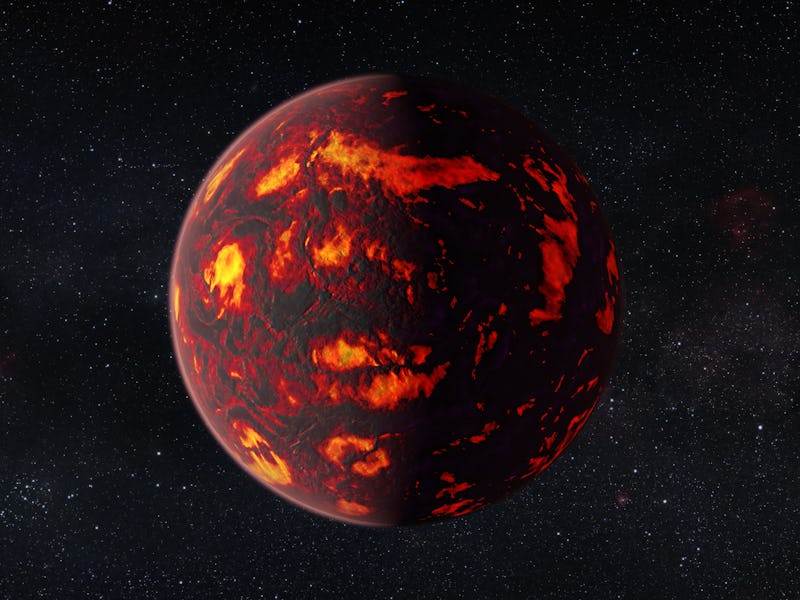Astronomers Discover What Atmosphere Is Like on a Super-Earth
There's hydrogen and helium, but, unfortunately, no water.

A super-Earth is essentially an exoplanet with a significantly bigger mass than Earth, but substantially lower than the masses of ice giants like Uranus and Neptune. We don’t know a ton about them, but we are getting closer. In a new discovery, astronomers have successfully characterized the atmosphere of a super-Earth for the first time ever.
Initially, the results themselves, published in the Astrophysical Journal, are a bit underwhelming: The super-Earth in question, 55 Cancri e, turns out to have a dry atmosphere heavy on hydrogen and helium, and lacks water vapor. Those are pretty bad signs that the planet could sustain life.
So, that sucks, but on the plus side, scientists have finally demonstrated they can figure out what that exoplanet atmosphere is. The team made observations using the Hubble Space Telescope’s Wide Field Camera 3, and determined the types of gases that composed the planet’s atmosphere using a new kind of analytical processing technique that revealed the spectrum of elements in the air.
This is going to be invaluable later on for when we actually do find an exoplanet that’s habitable — for human beings, or something else entirely.
“This result gives a first insight into the atmosphere of a super-Earth,” said University College London astronomer and study coauthor Giovanna Tinetti in a press release. “We now have clues as to what the planet is currently like and how it might have formed and evolved, and this has important implications for 55 Cancri e and other super-Earths.”
Super-Earths like 55 Cancri e are the most common type of planet in the Milky Way. If we want to learn more about the balls of rock and gas floating around us — and more importantly, find out whether human or alien life could live on those surfaces — we need to identify as much as we can about them from over here on the Pale Blue Dot.
55 Cacri e itself is a unique type of super-Earth: It orbits pretty close to its host star, giving rise to surface temperatures nearing 2,000 degrees Celsius. It was pretty clear even before we snapped up data about atmosphere that this exoplanet was a dead zone.
This artist’s impression shows the super-Earth 55 Cancri e in front of its parent star.
At least the researchers also found traces of hydrogen cyanide in 55 Cancri e’s atmosphere — apparently a marker for carbon-rich atmospheres. This planet might not be habitable, but it’s worth checking any others in its neighborhood.